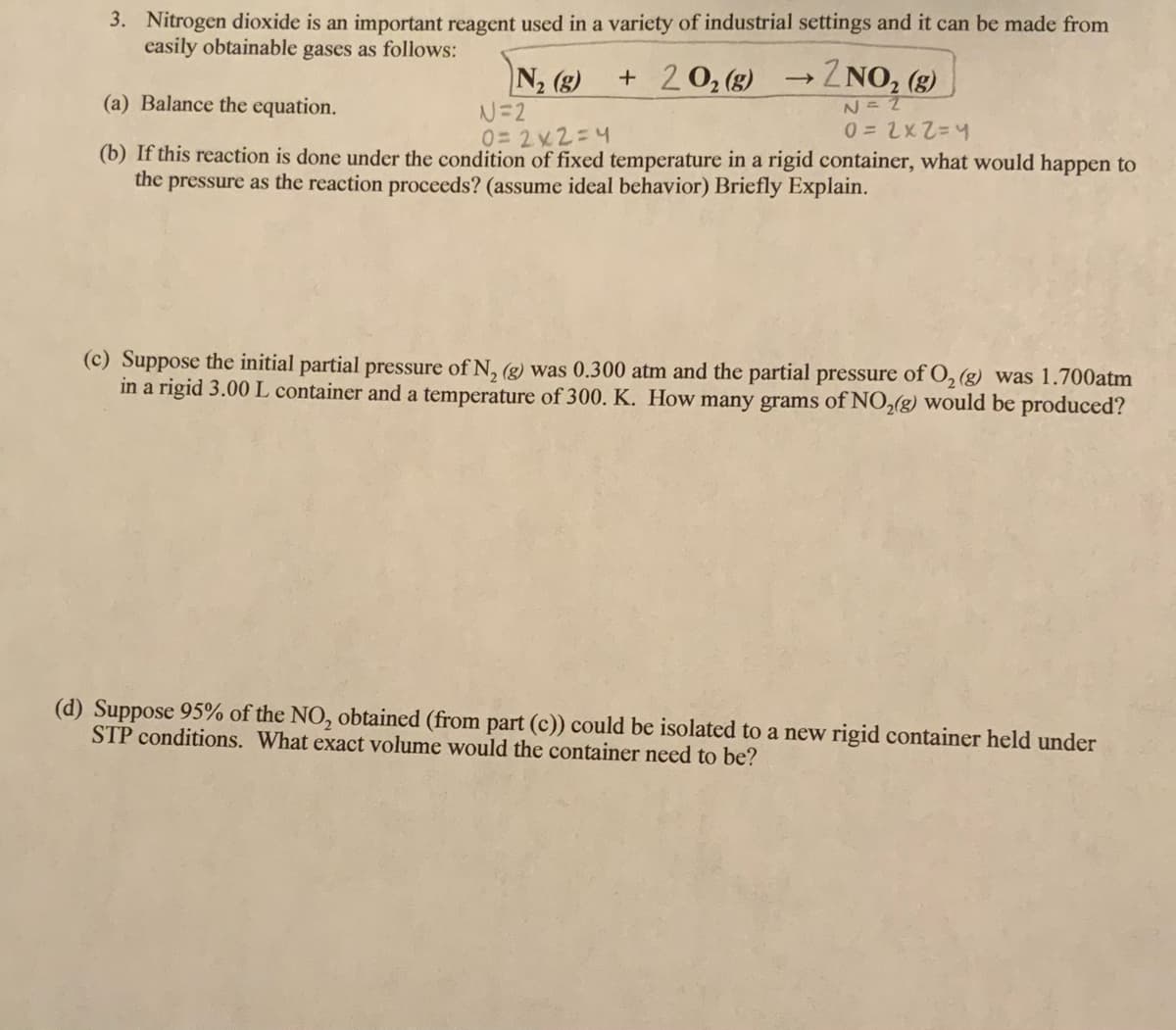3. Nitrogen dioxide is an important reagent used in a variety of industrial settings and it can be made from easily obtainable gases as follows: +20, (g) →2NO, (g) N2 (g) N=2 0= 2x2=4 (a) Balance the equation. N= 2 (b) If this reaction is done under the condition of fixed temperature in a rigid container, what would happen to the pressure as the reaction proceeds? (assume ideal behavior) Briefly Explain. (c) Suppose the initial partial pressure of N, (g) was 0.300 atm and the partial pressure of O, (g) was 1.700atm in a rigid 3.00 L container and a temperature of 300. K. How many grams of NO,(g) would be produced? (d) Suppose 95% of the NO, obtained (from part (c)) could be isolated to a new rigid container held under STP conditions. What exact volume would the container need to be?
Classes Of Functional Groups
Organic Chemistry deals mostly with carbon and hydrogens, also called hydrocarbons, but those groups which replace hydrogen and bonds with carbon to give a characteristic nature, unique of their own, to the hydrocarbon they are attached to, are called functional groups. All the compounds belonging to a functional group undergo reactions in a similar pattern and are known to have similar physical and chemical properties.
Characteristics Of Functional Groups
In organic chemistry, we encounter a number of special substituent groups which are attached to the hydrocarbon backbone. These groups impart certain characteristics to the molecule of which it is a part of and thus, become the highlight of that particular molecule.
IUPAC Nomenclature
In Chemistry, IUPAC stands for International Union of Pure and Applied Chemistry which suggested a systematic naming approach for the organic and inorganic compounds, as in the beginning stage of nomenclature one single chemical compound was named in many ways by which lead to confusion. The need for this approach aroused as the number of chemical compounds newly discovered were increasing (approximately 32 million compounds) and the basic concept of nomenclature i.e. the trivial nomenclature and the derived system of nomenclature failed to overcome the challenge. It is an important task to name a chemical compound systematically and unambiguously which reduces lots of confusion about the newly reported compounds.

(b) The nitrogen dioxide synthesis takes places as the following reaction.
The reaction takes in rigid vessel indicating that volume of the container remains constant implying that volume of the gas is also constant. Also it is mentioned that the temperature of the gas is constant.
In an ideal gas equation , that is the product of pressure and volume of the gas is directly proportional to the number of moles and temperature of the gas. So, when volume and temperature are constant, the pressure of the gas will be directly proportional to the number of moles of the gas.
Here, according to the reaction stoichiometry, in the reactant side, there is 1 mole of N2 and 2 moles of O2. Therefore, there are 3 moles of gas. In the product side, there is 2 moles of NO2. Therefore, 3moles of reactants in gas phase produces 2 moles of products in gas phase. There is a decrease in the number of moles as the reaction proceeds. This implies that pressure of the reaction will also decrease as the reaction proceeds.
Step by step
Solved in 5 steps









